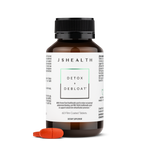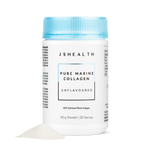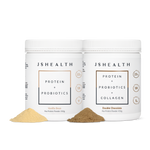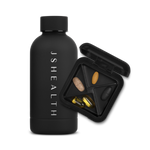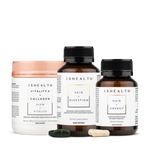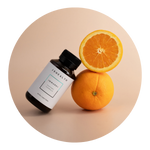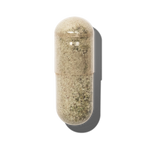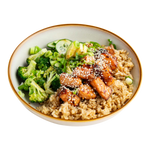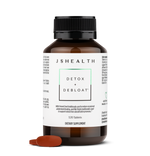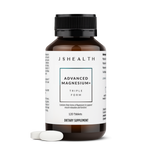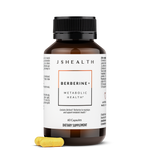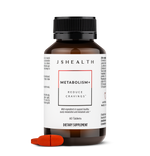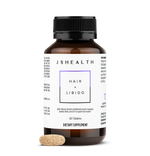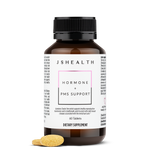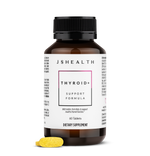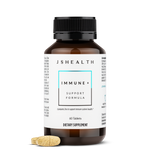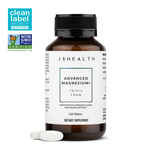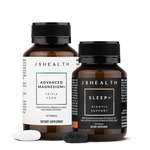25% OFF SUBSCRIPTIONS!*
10 Fermented Foods To Add to Your Diet for Help With Gut Health
Gut health has become one of the most popular topics among all things wellness. Although research is still emerging, there are many strategies that can help you support good gut health.
One of the most well-known ways to give your gut a hand is by consuming fermented foods. It’s a practice that goes back hundreds of years across many cultures, and more and more people each year are reconnecting with it.
In this article, we are going to break down the basics of gut health and take a look at ten fermented foods that you can begin to incorporate into your diet and lifestyle. We’ll also cover another way to support the gut — supplementation.
What Is the Gut Microbiome?
The human digestive tract is a path that runs from your mouth all the way through your body, ending at the rectum. It also includes the stomach, small intestine, and large intestine (colon).
The gut microbiome is a collection of trillions of microbes — bacteria, viruses and fungi — that coexist within this path, making up a complex ecosystem. Some of these microbes are beneficial to us and our health, while others can be harmful.
Why Is Gut Health Important?
This community of microorganisms plays an important role in a variety of physiological functions, systems, and biological processes. First and foremost, it is key to the digestive process and the absorption of nutrients from food.
The gut microbiome is also involved in the regulation of the immune system, which protects the body from harmful foreign invaders, as well as the function of the nervous system, which impacts mood and behavior.
Having a healthy gut means that you have a wide diversity of bacteria and other microbes and that these microorganisms are living in balance with each other. You want beneficial bacteria to dominate the community and keep the bad bacteria in check.
An unbalanced gut microbiome, also called “dysbiosis,” can cause poor gut health in general. The health benefits of having balanced gut bacteria include bone health, digestive health, mental health, heart health, and immune health.
What Are Fermented Foods?
Fermented foods are foods that have undergone a process called “lacto-fermentation,” where natural bacteria feed on the sugar and starch to create lactic acid. Although the process of fermentation was traditionally used to preserve food, it can also elevate the food’s nutritional density, produce probiotics and give it a sour-ish, tangy flavor.
Why Are Fermented Foods Important?
Fermented foods are good for the gut for several reasons, but primarily because they contain probiotics. Probiotics are live beneficial bacteria that “seed” the gut microbiome and grow. These microbiota can also help to support balance when factors like illness, poor diet, stress and antibiotics negatively impact the gut.
Our Top Ten Favorite Fermented Foods
Whether you’re new to fermented foods or they’ve been a part of your diet for ages, there are plenty of options you can choose to keep things interesting. Here are some of our favorite fermented foods.
1. Sauerkraut
Sauerkraut is a German word — however, the history of this dish can be traced back all the way to the Roman Empire and China. This dish is made from fermented cabbage and is typically eaten as a condiment or side dish. Either way, it’s a great way to get more veggies.
2. Kefir
This yogurt-like drink first appeared in ancient Russia and spread throughout Europe and beyond over the following few millennia. Kefir is a fermented milk drink that is made by adding kefir grains, which contain a combination of bacteria and yeast, to various types of milk.
3. Kombucha
Kombucha is thought to have originated in China and began to spread to other parts of the world during the 20th century. It’s a fermented tea drink that is made by adding active cultures of bacteria and yeast to sweetened tea.
4. Pickles
Pickles and other pickled vegetables have been around for thousands of years. Be careful, though — most “pickles” sold today at the grocery store are not true pickles.
Instead, they are just cucumbers in vinegar. The way to tell the difference is that real fermented pickles will be refrigerated, as they are not shelf stable — vinegar pickles will be in jars that are not refrigerated.
5. Miso
Miso is central to Japanese cuisine, where it is used in countless dishes. This traditional seasoning is made from fermented soybeans and grains and is commonly used in miso soups and sauces.
6. Tempeh
Tempeh is a traditional Indonesian food made from fermented soybeans. It is fairly neutral in taste, making it easy to incorporate into many different types of dishes. Tempeh is especially great for vegans and vegetarians because it can be used as a meat substitute.
7. Yogurt
Yogurt comes from milk that has been fermented by lactic acid bacteria, such as Lactobacillus bulgaricus and Streptococcus thermophilus. It’s another versatile food that can be combined with other gut-supporting foods like blueberries, granola, nuts and seeds.
Be careful, though — a lot of mass-produced yogurt is highly processed and packed with sugar. When you’re at the grocery store, try to go for a more natural form of yogurt that has zero added sugar. If you’re sensitive to dairy products, you may want to avoid yogurt, as it can still contain some lactose.
8. Kimchi
Kimchi is a traditional Korean dish made from fermented vegetables, most commonly cabbage, along with spices and seasonings. It’s similar to sauerkraut but is usually very spicy. Try adding kimchi to your next rice bowl if you’re someone who enjoys the heat.
9. Natto
Natto is another traditional Japanese food made from fermented soybeans. It has a strong, distinct taste and is often served as a breakfast food.
10. Apple Cider Vinegar (ACV)
ACV is made by fermenting apple cider. We can get ACV with or without the “mother,” which refers to the good bacteria colonies used during fermentation. The acids in ACV can also support the existing probiotics within our gut.
ACV can be used in many different ways, including as a condiment, a salad dressing, and on its own as a natural remedy.
How Can You Incorporate Fermented Foods Into Your Diet?
When you’re starting to eat fermented foods, it can be quite a shock. They often have very distinctive tastes, and many people find they don’t actually like the taste all that much. However, you can follow these tips to set yourself up for success.
It’s also worth noting that if you’re struggling to eat enough probiotics, or if you have specific health goals in mind (like weight loss), then you may want to work with a dietitian. They can help you adjust your diet to best support your overall health.
Start With Small Amounts
Although probiotic-packed fermented foods are great for gut health, our bodies may need some time to adjust to the probiotic content if we’re not used to it. An overload of probiotics isn’t harmful, but it may cause some unwanted symptoms like stomach discomfort, bloating and gas.
It’s also worth noting that dairy products, such as yogurt and kefir, can also be high in carbohydrates. Also, sourdough bread is another fermented food that is high in carbohydrates. To support your health, it’s important to limit carbohydrates, as eating too many at once can contribute to digestive issues.
Find the Foods You Enjoy
Not all fermented foods are for everyone — many of them are an acquired taste. It’s a good idea to sample them until you find a few that you like the best, then just focus on incorporating those into your diet.
Combine Them With Other Foods
A great way to incorporate fermented foods into your diet is to think of them more as condiments or toppings rather than dishes themselves. Fermented foods like sauerkraut and kimchi are delicious on sandwiches, in salads and in stir-fries, and foods like kefir and yogurt work well in smoothies and smoothie bowls.
Always Read the Label
As you’re developing your preferences for fermented foods, be sure to always read the label when you are shopping for them. Make sure the foods actually contain beneficial bacteria, and make sure to watch out for added sugars.
What About Prebiotic Foods?
Not to be confused with probiotic foods, “prebiotic” foods are foods that contain specific forms of insoluble fiber. Insoluble fibers are fibers that the digestive process cannot break down but instead pass straight through the gut.
The insoluble fibers that exist within prebiotic foods are special because while they are traveling through the gut, they “feed” the beneficial bacteria, causing them to grow.
Here are some fantastic prebiotic foods that can help to fortify your gut health:
- Onions
- Garlic
- Asparagus
- Mushrooms
- Leeks
- Bananas
- Dandelion greens
- Apples
- Oats
- Cocoa
- Flaxseeds
Using Probiotic Supplements To Support Gut Health
If you are having trouble incorporating fermented foods into your diet, using a probiotic supplement is another great way of supporting your gut with beneficial bacteria.
Nutritionist designed in Australia, our probiotic formula features Bifidobacterium lactis, Bifidobacterium longum and Lactobacillus rhamnosus — and these three strains can cover all the bases when it comes to gut health.
Here are a few of the powerful benefits that our Probiotic+ capsules have to offer:
- Maintains beneficial intestinal flora
- Supports healthy immune system function
- Carefully selected multi-strain formula
Our Probiotic+ capsules are also shelf-stable, which means that they do not require the same refrigeration that many other probiotic products do. This makes them perfect for taking on the go or when you are traveling and want to stay consistent with your gut health regimen.
Sources:
Gut Microbiome | American Gastroenterological Association
Dysbiosis and the immune system | Nature Reviews Immunology
Probiotics: What is it, Benefits, Side Effects, Food & Types | Cleveland Clinic
